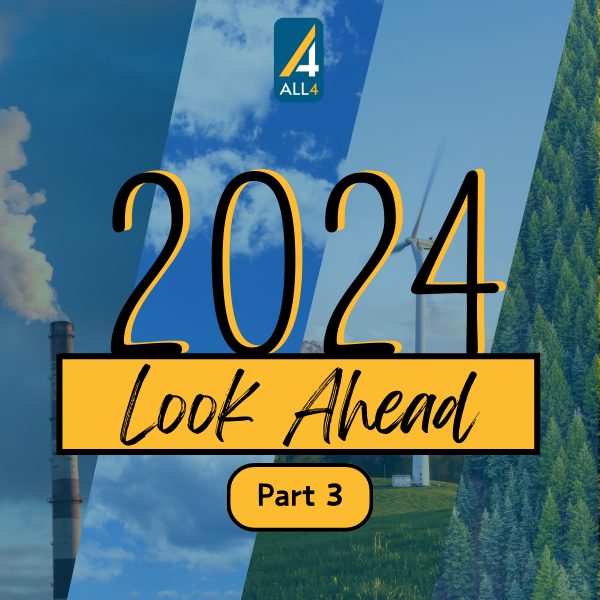
2024 Look Ahead Part 3
Posted: January 25th, 2024
2024 Look Ahead: Occupational Health and Safety // Victoria Sparks As we look back on 2023, the Occupational Safety and Health Administration (OSHA) was busy – expanding National Emphasis Programs (NEPs), hiring more inspectors, conducting more inspections, and expanding rules […]
Read article
2024 Look Ahead Part 2
Posted: January 18th, 2024
PFAS Expectations for 2024 // Kayla Turney With the new year, we expect to see several of the same issues relating to per- and polyfluoroalkyl substances (PFAS), as well as a handful of new ones to tackle. While the regulatory […]
Read article
Integration of AI With Emerging Technologies for Environmental Work
Posted: January 11th, 2024
In today’s rapidly evolving world, the role of technology, particularly artificial intelligence (AI), has become increasingly pivotal across various sectors. Environmental professionals tasked with ensuring regulatory compliance, improving air quality, enhancing environmental, health, and safety (EHS) standards and advancing Environmental, Social, and […]
Read article
2024 Look Ahead
Posted: January 9th, 2024
Part 1 2024 Look Ahead // Colin McCall Hello to all of our clients, partners, and colleagues as we enter 2024. We are very grateful for the time and work together in 2023 and look forward to another great year […]
Read article
The Early Bird Gets the Worm: Preparing for Enhanced Flare Monitoring in the Chemical Sector
Posted: October 31st, 2023
In case you haven’t heard yet, the U.S. Environmental Protection agency (U.S. EPA) has proposed revisions to the National Emission Standards for Hazardous Air Pollutants (NESHAP) and New Source Performance Standards (NSPS) applicable to facilities in the Synthetic Organic Chemical […]
Read article
Operate a Commercial Sterilization Facility? 40 CFR Part 63, Subpart O Amendments Are Coming in 2024 with More Stringent Emission Limits & Advanced Continuous Monitoring Requirements
Posted: August 30th, 2023
The U.S. Environmental Protection Agency (EPA) has proposed amendments to the National Emission Standards for Hazardous Air Pollutants (NESHAP) for Ethylene Oxide (EtO) Commercial Sterilization and Fumigation Operations (40 CFR Part 63, Subpart O) that if finalized, will require the […]
Read article
South Coast Air Quality Management District (SCAQMD) PAR 1110.2 and PR 1110.3
Posted: August 7th, 2023
The South Coast Air Quality Management District (SCAQMD) has proposed changes to Rule 1110.2 – Emissions from Gaseous- and Liquid-Fueled Engines (Rule 1110.2), which governs emissions from stationary and portable engines greater than 50 brake horsepower (bhp). In addition, SCAQMD […]
Read article
South Coast Air Quality Management District (SCAQMD) Amended Rule 1147 and Rule 1147.2
Posted: July 25th, 2023
The South Coast Air Quality Management District (SCAQMD) amended Rule 1147 on May 6, 2022 and adopted Rule 1147.2 on April 1, 2022 to further reduce nitrogen oxides (NOX) and carbon monoxide (CO) emissions from gaseous fuel-fired combustion equipment, and […]
Read article
Data Quality Part 2: What Are the Components of Data Quality?
Posted: May 22nd, 2023
In the first article of this series we started with this thought: Defining data quality and implementing a data quality program furthers the goal that the data collected serve the intended purpose, i.e., informed decision making. We walked through […]
Read article
Fuel Flow Monitoring Systems Part 2: Potential Challenges and Best Practices
Posted: April 3rd, 2023
In Part 1, we looked at a few common types of fuel meters, how they measure flow, how they can be applied, and how they can impact a facility’s operations. Data from fuel flow meters are fed into regulatory reports, […]
Read article
